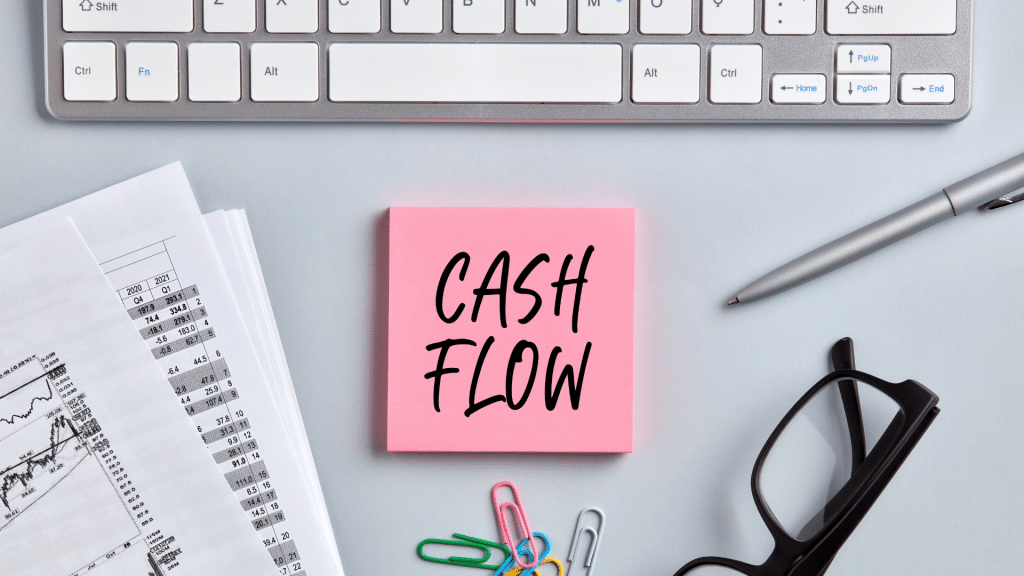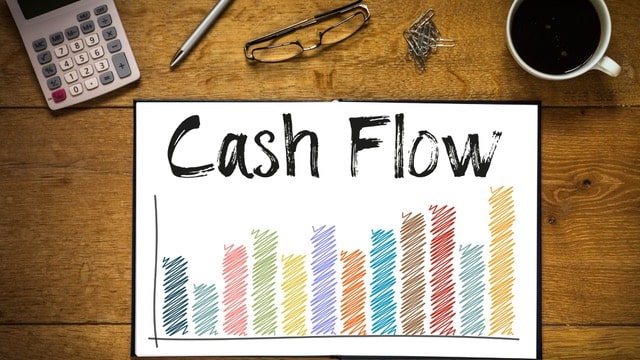Effective real estate investing relies heavily on mathematics. Understanding the financial dynamics of your business is essential to its growth. To gauge the profitability of your rental properties, mastering the art of calculating rental property cash flow through a thorough analysis is paramount.
Let’s delve into the process of calculating cash flow and conducting a comprehensive analysis of your rental property. This will provide insights into maximizing your returns.
Understanding Rental Property Cash Flow Analysis
Before diving into strategies for generating positive cash flow, it’s crucial to conduct an accurate rental property cash flow analysis. This entails scrutinizing all financial aspects of owning a rental property to ensure it can generate a profit. It’s essential to consider these numbers over several months to gain a holistic perspective.
This analysis allows you to factor in periods when the unit might remain vacant or require maintenance. A rental property cash flow analysis paints a broader picture, encompassing both the costs involved in operating the property and its income potential.
Defining Cash Flow
Cash flow, in the context of real estate, represents the disparity between a business’s income and its operating expenses. Specifically, for real estate, it pertains to the difference between rental income and various expenses, such as:
- Mortgage financing
- Real estate taxes
- Homeowner’s insurance
- Home repairs
- Vacancies
- Utilities
- Capital expenditures
Income includes rent from multi-family or single-family rental properties and any additional fees like application or late fees, laundry income, and miscellaneous charges collected.
A positive cash flow occurs when your rental income surpasses your operating expenses, while a negative cash flow arises when your operating expenses exceed your rental income.
Calculating Rental Property Cash Flow
While calculating cash flow may seem straightforward, many individuals make mistakes in the process. At its core, cash flow calculation is simple: you deduct expenses from income.
Cash Flow = Total Income – Total Expenses
Despite its apparent simplicity, the components involved in this equation can be intricate. Let’s break down the steps involved in calculating rental property cash flow to gain a better understanding:
Step 1: Calculate Gross Cash Flow and Income
Before determining rental property cash flow, you must ascertain the income generated by the property. Total income may not always align with total rent; you might need to factor in other income sources, such as application fees, late fees, and laundry income. It’s prudent to be conservative in your estimates.
Increasing cash flow should be a priority for investment properties, even minor adjustments can accumulate over time. Consider various expenses when analyzing your investment cash flow.
Step 2: Determine Gross Operating Expenses
Gross operating expenses encompass the costs associated with operating your rental property. This includes taxes, mortgage payments, utilities, and maintenance fees. Account for all potential expenses and err on the side of caution by overestimating to ensure you have sufficient funds for unforeseen circumstances.
Step 3: Calculate Net Operating Income (NOI) Before Financing
After listing all your monthly income sources, you can calculate the Net Operating Income (NOI) generated by your real estate investments. The formula for NOI is simple:
Net Operating Income = Gross Rental Income – Operating Expenses
Lenders typically require a satisfactory NOI in your rental property cash flow analysis before granting financing. You must have sufficient NOI to cover property expenses and leave room for cash flow to attract lenders.
Step 4: Calculate Net Cash Flow After Mortgage Payments
Once you secure financing for your rental property, you can finalize your cash flow analysis by determining the net cash flow after making mortgage payments. This figure represents the money remaining after covering all property expenses. The exact mortgage payment amount is crucial in this calculation.
Expenses Impacting Cash Flow
Rental properties entail numerous expenses, and overlooking any of them in your cash flow analysis can be detrimental to your business. These are some common expenses:
- Repairs
- Mortgage payments
- Mortgage insurance (PMI or MIP)
- Vacancy rate
- Property taxes
- Utilities (water, sewer, trash, electric, propane, natural gas, etc.)
- Catastrophe insurance (flood, fire, earthquake, property hazard)
- New appliances
- General upkeep, landscaping, and property management
- HOA fees/dues
- Office supplies/software
- Gas/mileage
- Payroll
Since not all expenses occur monthly, it’s advisable to allocate a certain percentage for future expenses. For instance, you may assume one month of vacancy per year, representing 1/12 or 8.3% of your monthly vacancy expense.
While some expenses like office supplies and gas might be negligible for individual houses, they can accumulate significantly for larger multi-family investment properties. Including each item in your cash flow calculation ensures a comprehensive overview of your monthly outflows.
What Constitutes Average Cash Flow for a Rental Property
The average cash flow on a rental property typically falls between 7% and 8%. However, the actual cash flow can vary significantly based on location, property values, living costs, amenities, and rental demand. Additionally, each real estate investor has their own criteria for defining good cash flow.
Determining “Good” Cash Flow
When considering what constitutes “good” cash flow for a rental property, targeting $100 to $200 in monthly cash flow per unit is a reasonable goal. For example, for a duplex, aiming for a minimum of $200 per month, and for a fourplex, $400 per month, is advisable. This amount should represent the cash flow remaining after covering all expenses.
However, it’s essential to consider the size of the investment. For instance, investing $1 million and making $100 a month may not seem attractive, whereas investing $500 and making $100 monthly can be considered an excellent deal.
Another critical metric to consider is the cash-on-cash return.
Evaluating “Good” Cash-On-Cash Return
Cash-on-cash returns indicate the percentage of your investment you recoup in cash flow during the year. To calculate this, divide your annual cash flow by your initial investment amount.
Ideally, you should aim for a cash-on-cash return between 10% and 12%. This figure is derived from the historical performance of the stock market, which has averaged between 6% and 7% over the past century. Striving for a 12% cash-on-cash return ensures a more attractive investment compared to the stock market.
However, it’s important to balance this with the total profit generated. A high cash-on-cash return may not be worthwhile if the total profit is minimal. Therefore, it’s crucial to consider both metrics to make informed investment decisions.
Additional Calculations for Rental Property Cash Flow Analysis
In addition to the primary calculations, several other financial metrics are valuable for a comprehensive rental property cash flow analysis:
Capitalization Rate (Cap Rate): This metric assesses the risk associated with owning the property. Calculate it by dividing the net operating income (NOI) by the current market value of the property.
Cash Flow Return on Investment (ROI): This calculation reveals how much cash flow a rental property will generate based on its value and investment cost. You can calculate ROI using different formulas, such as (NOI / cost of investment) x 100 or [(final value of investment – initial value of investment) / cost of investment] x 100.
50% Rule: This rule of thumb estimates that a rental property’s expenses are approximately 50% of the income, excluding mortgage principal and interest payments. The formula is Cash Flow = (total Income x 0.5) – mortgage P&I. While it’s a quick way to estimate cash flow, it should complement, not replace, a thorough property analysis.
1% Rule: This rule suggests that the monthly rent should be at least 1% of the property’s purchase price. It’s a quick way to determine whether a property meets the 1% rule by multiplying the purchase price by 1% and assessing how it compares to local rents.
Cash Flow Fluidity
Maintaining liquidity in your investments is vital. Liquidity ensures that you can access funds swiftly when opportunities arise. A rental property’s cash flow is considered fluid when money consistently flows into and through your real estate business. Having liquidity enhances your appeal to banks and lenders when seeking financing.
The Savvy Investor Calculator
Consider using the Savvy Investor Rental Property Calculator to perform these calculations accurately.
Conducting a rental property cash flow analysis is essential for scrutinizing the financial aspects of your investment. By applying these formulas and principles, you can make informed decisions and maximize the potential returns on your real estate investments.
Boosting Your Cash Flow
To increase your cash flow, focus on preventive maintenance, attract long-term tenants, appeal property taxes if unjustified, and monitor mortgage interest rates for refinancing opportunities. Ultimately, a positive cash flow should be the goal of your real estate investments, aligning with your investment objectives.
Conclusion
In conclusion, mastering the art of rental property cash flow analysis empowers you to make informed investment decisions and ensure the profitability of your real estate ventures.
You can find the Savvy Investor Rental Property Calculator here.




